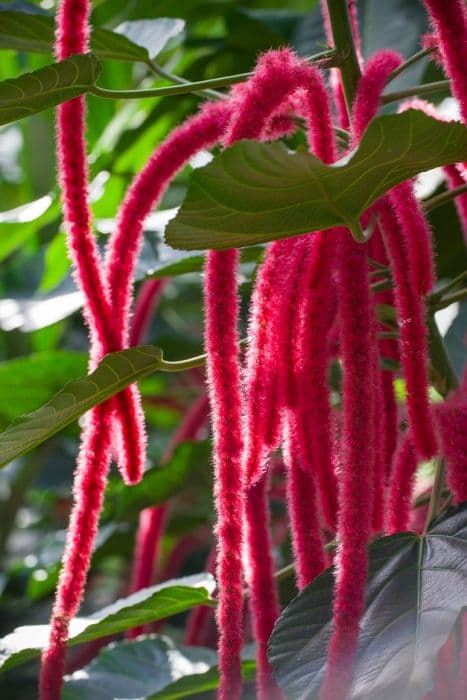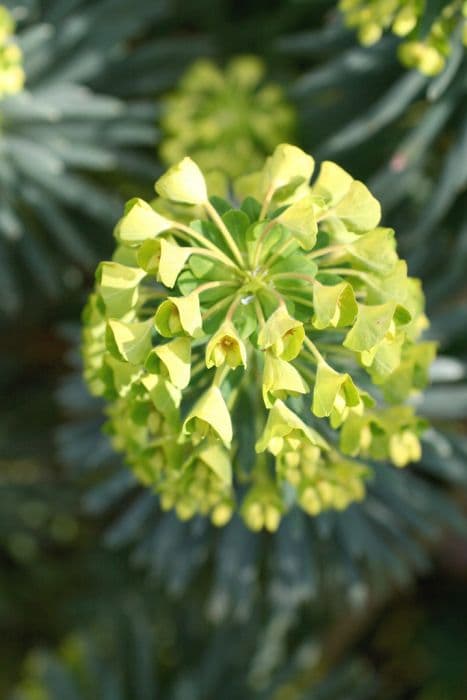African milk barrel Euphorbia horrida

ABOUT
E. horrida is a cactus-like shrub with erect, ridged stems bearing long spines and solitary green flowers
About this plant
 Names
NamesFamily
Euphorbiaceae.
Synonyms
African Milk Barrel, Horrid Spurge.
Common names
Euphorbia horrida Boiss.
 Characteristics
CharacteristicsLife cycle
Perennials
Foliage type
Evergreen
Color of leaves
Green
Height
2 feet (0.61 meters)
Spread
2 feet (0.61 meters)
Plant type
Succulent
Hardiness zones
9
Native area
South Africa
Benefits
 General Benefits
General Benefits- Decorative Appeal: Euphorbia horrida, commonly known as African Milk Barrel, has a striking appearance with its spiny ridges and cactus-like shape, making it a unique addition to any plant collection or garden.
- Low Maintenance: This plant requires minimal care, thriving on neglect, and is ideal for those who do not have a lot of time for plant care.
- Drought Tolerance: As a succulent, it is extremely drought-resistant, storing water in its thick stems, which makes it perfect for arid and dry climates.
- Pest Resistance: Euphorbia horrida has a natural resistance to many pests, reducing the need for chemical pesticides in the garden.
- Adaptability: It can adapt to a variety of soil types as long as they are well-drained, which makes it versatile for different landscape uses.
- Longevity: Being a slow-growing plant, it can live for many years with proper care, becoming more impressive with age.
 Medical Properties
Medical PropertiesThis plant is not used for medical purposes.
 Air-purifying Qualities
Air-purifying QualitiesThis plant is not specifically known for air purifying qualities.
 Other Uses
Other Uses- Euphorbia horrida, commonly known as African Milk Barrel, can be used as a living security feature due to its sharp spines deterring unwanted access through garden boundaries or windows.
- In drought-prone regions, the plant is often incorporated into xeriscapes and rock gardens, taking advantage of its low water needs and contributing to water conservation efforts.
- The plant's unique and textured appearance makes it a popular sculptural element in contemporary landscape design, providing an aesthetic focal point.
- African Milk Barrel can be used in educational settings, such as botanical gardens, to teach about succulent care, plant adaptation, and desert biome biodiversity.
- This plant can be featured in art and photography due to its distinct form and pattern, inspiring creative representations in various media.
- Its ability to thrive in poor soils makes African Milk Barrel a valuable addition to erosion control projects in arid and semi-arid regions.
- Gardeners might use the African Milk Barrel as a natural form of pest control, as some garden pests avoid areas with spiny plants.
- It can be a thoughtful companion plant for cactus collections, enhancing the overall display with its contrasting yet complementary texture.
- As a symbol of resilience and endurance, the African Milk Barrel can be a meaningful element in drought memorial gardens or installations.
- The sap of African Milk Barrel is sometimes used in traditional fishing in some regions of Africa to stupefy fish, making them easier to catch.
Interesting Facts
 Feng Shui
Feng ShuiThe African Milk Barrel is not used in Feng Shui practice.
 Zodiac Sign Compitability
Zodiac Sign CompitabilityThe African Milk Barrel is not used in astrology practice.
 Plant Symbolism
Plant Symbolism- Resilience: Euphorbia horrida, commonly known as African Milk Barrel, is highly adaptable to arid environments, symbolizing the ability to thrive under harsh conditions.
- Protection: Its spiny appearance can signify a need for defense or a protective barrier against negative forces.
- Endurance: The plant's capacity to store water in its thick skin allows it to survive long periods without rain, indicating toughness and persistence.
- Adaptability: African Milk Barrel's success in various habitats represents versatility and the ability to adjust to changing situations.
 Water
WaterThe African milk barrel's watering needs to be cautious as overwatering can be damaging. Water this plant when the top inch of the soil feels dry, which typically means once every two to three weeks in active growth periods like spring and summer. During these months, you may provide about one to two gallons depending on the size of the plant and planter. In fall and winter, reduce watering frequency further to once every four weeks or less as the plant enters dormancy. Always ensure the pot has good drainage to prevent water from pooling at the bottom.
 Light
LightAfrican milk barrel thrives in bright, direct sunlight for several hours a day. A south-facing window is ideal for this succulent, as it mimics its native habitat where it receives strong sunlight. However, it can also adapt to bright indirect light if necessary, but keep in mind that too little light can hinder its growth.
 Temperature
TemperatureAfrican milk barrel enjoys warm temperatures and should be kept in conditions ranging from 60 to 85°F for optimal growth. This plant is not frost-hardy and should not be exposed to temperatures below 30°F as it could suffer serious damage. The ideal temperature range for the African milk barrel is on the warmer side to mimic its natural arid environment.
 Pruning
PruningPruning the African milk barrel is not regularly necessary. If pruning is required to remove dead or damaged parts to maintain the plant's appearance, it should be done cautiously using gloves and sanitized tools to prevent sap exposure. The best time for pruning is in the spring or early summer when the plant is actively growing.
 Cleaning
CleaningAs needed
 Soil
SoilAfrican Milk Barrel requires a well-draining soil mix with a pH around 5.5 to 6.0. A good recipe is one part perlite or coarse sand, two parts potting soil, and one part pumice.
 Repotting
RepottingAfrican Milk Barrel should be repotted every two to three years or when it has outgrown its current container.
 Humidity & Misting
Humidity & MistingAfrican Milk Barrel thrives in low to moderate humidity levels typical of indoor environments and does not require high humidity.
 Suitable locations
Suitable locationsIndoor
Place African Milk Barrel in bright, indirect light indoors.
Outdoor
Grow African Milk Barrel in full sun to partial shade outdoors.
Hardiness zone
9-11 USDA
 Life cycle
Life cycleEuphorbia horrida, commonly known as African Milk Barrel, begins its life cycle as a seed, which germinates in warm and well-drained soil conditions. After germination, the seedling slowly develops fleshy, spiky green stems that are characteristic of the species, with the process of photosynthesis predominantly taking place in the stems since leaves are reduced to spines. As the plant matures, it may produce small, inconspicuous yellow flowers, typically in the late spring or early summer, which are followed by the development of fruit that contains seeds for reproduction. The African Milk Barrel experiences slow growth throughout its life, often taking several years to reach maturity. Once mature, it continues to produce flowers and seeds annually, thereby continuing its life cycle, while also having the ability to propagate vegetatively from cuttings, leading to clonal offspring. Under optimal conditions and with proper care, Euphorbia horrida can live for many years, being a perennial plant with a potentially long lifespan.
 Propogation
PropogationPropogation time
Spring-Summer
Propogation: The most popular method of propagating Euphorbia horrida, commonly known as African Milk Barrel, is by stem cuttings. The ideal time for this process is during the warmer months, typically from late spring to early summer. To propagate, a healthy stem section is carefully cut using a sharp, sterilized knife. The cutting should be about 2 to 4 inches long (approximately 5 to 10 centimeters). It is crucial to allow the cut end of the stem to callus over for about a week before planting. This can be done by leaving the cutting in a warm, dry location out of direct sunlight. Once callused, the cutting can be placed in a well-draining cactus potting mix and watered sparingly until it establishes roots.
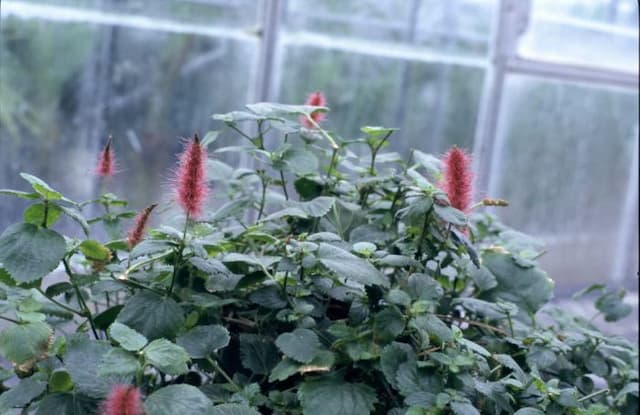
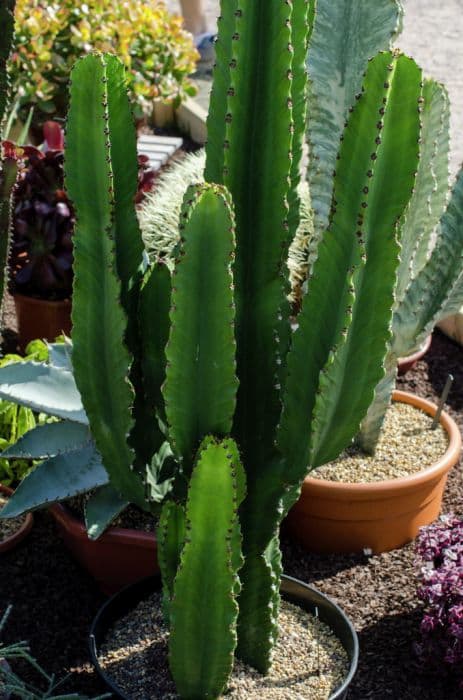
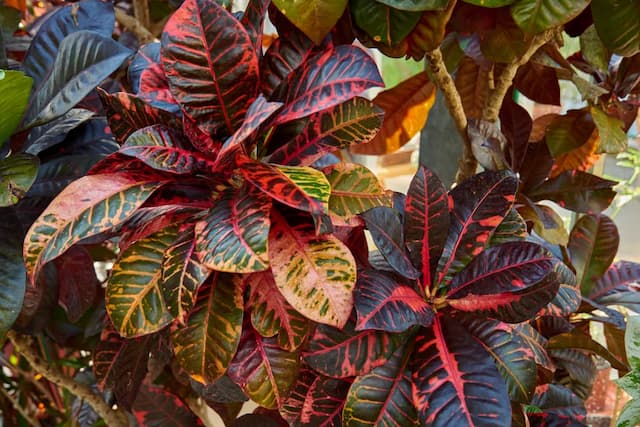
![Poinsettia [Jester Red]](/_next/image?url=https%3A%2F%2Fplants-admin.emdemapps.com%2Fimages%2Fplants%2F%2Fimages%2F604b55de5eb2c.png&w=640&q=75)


